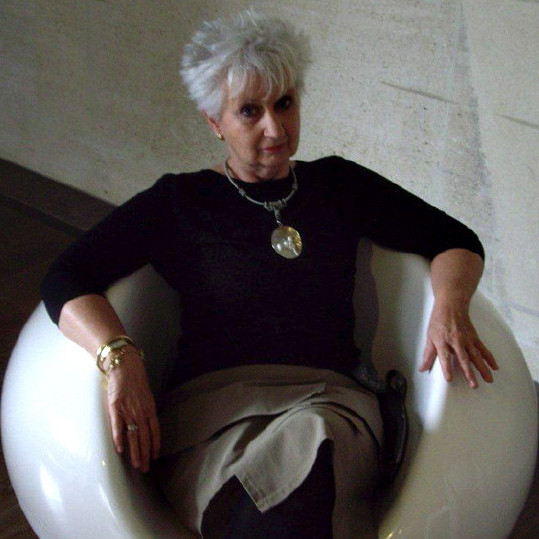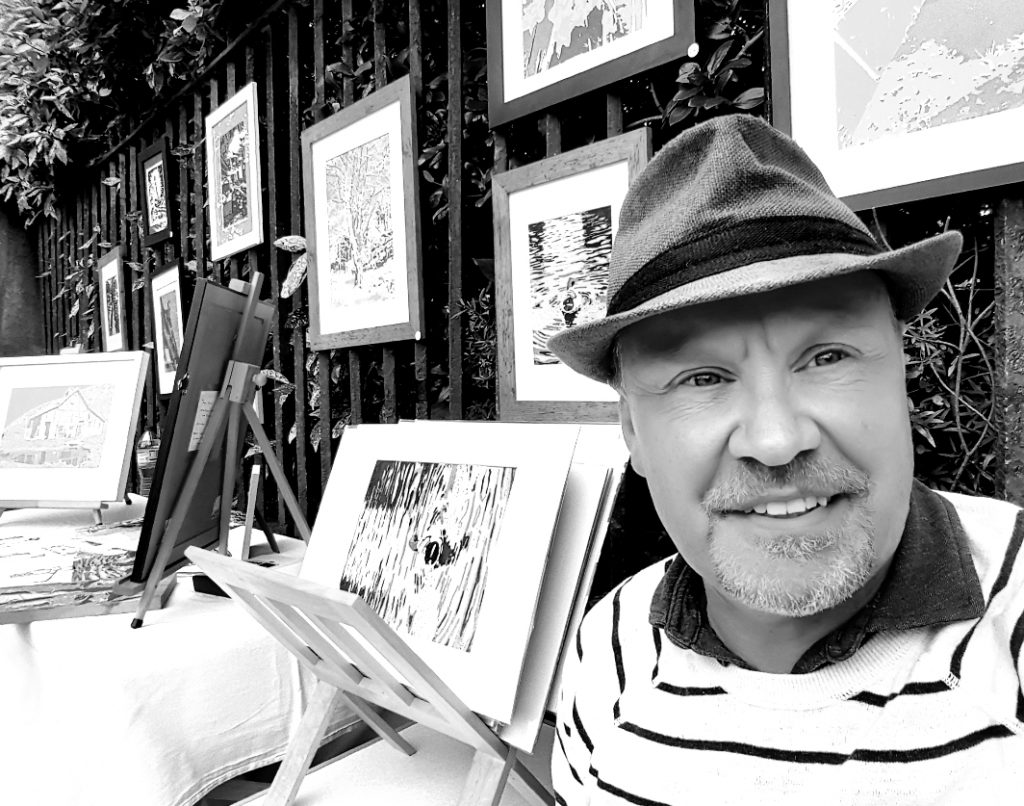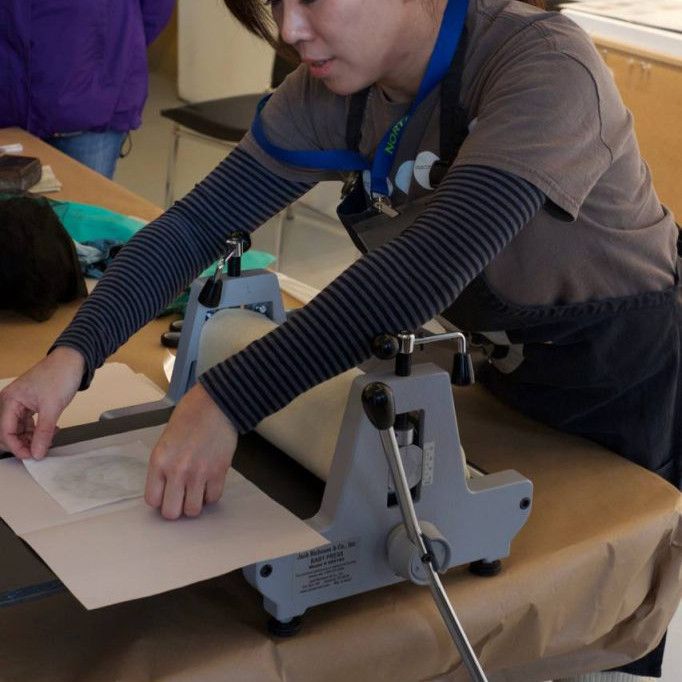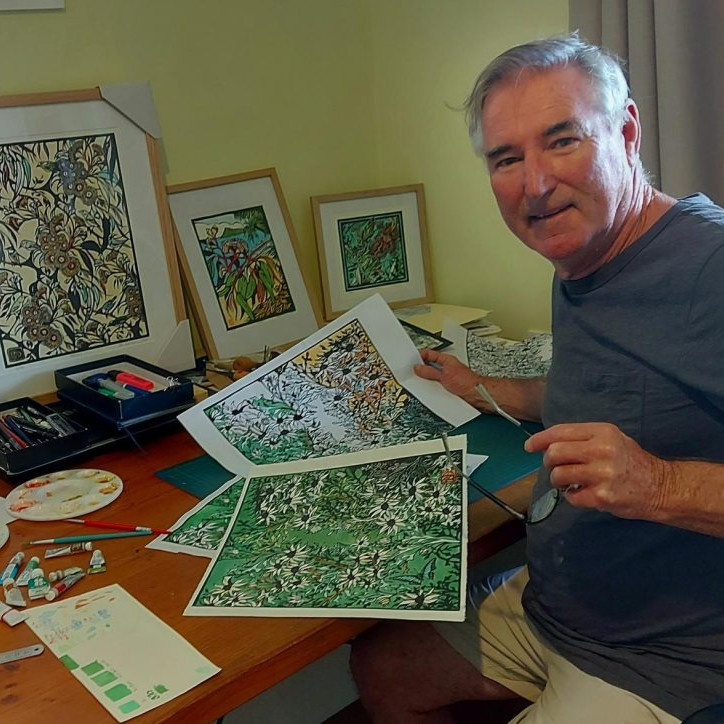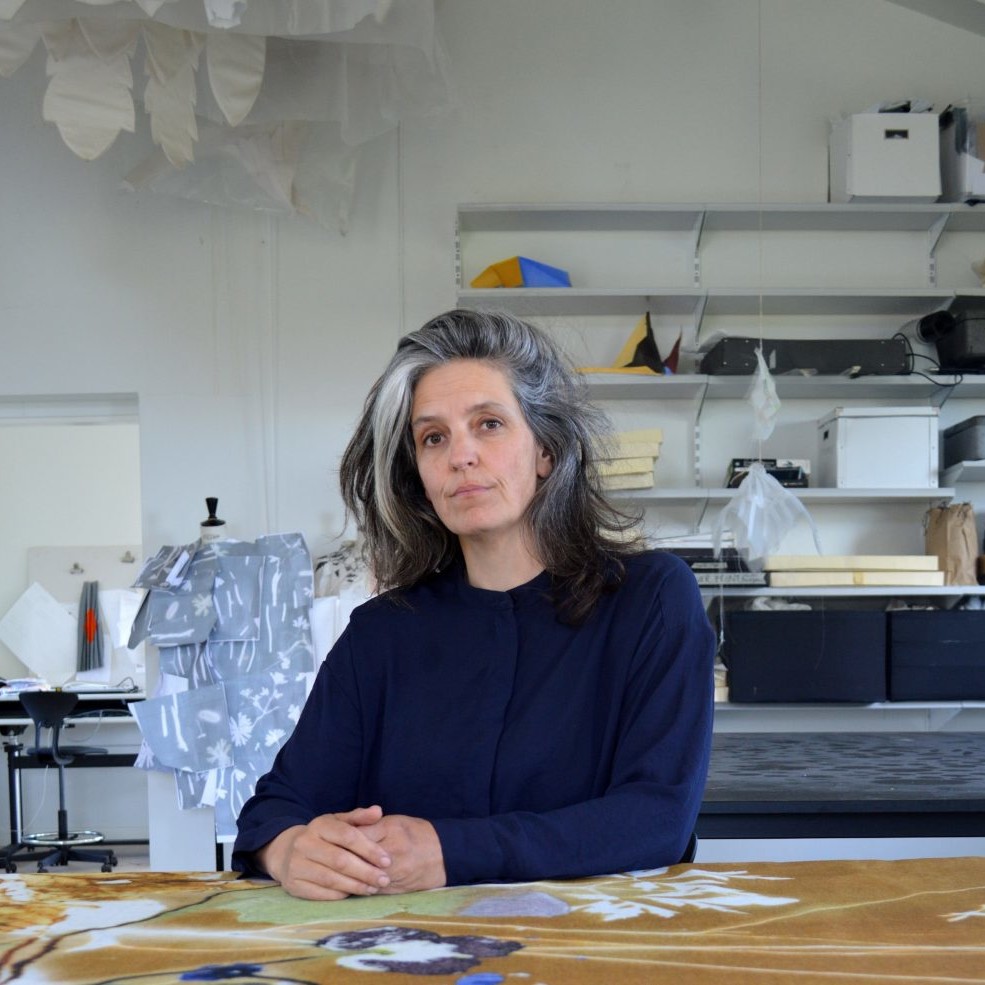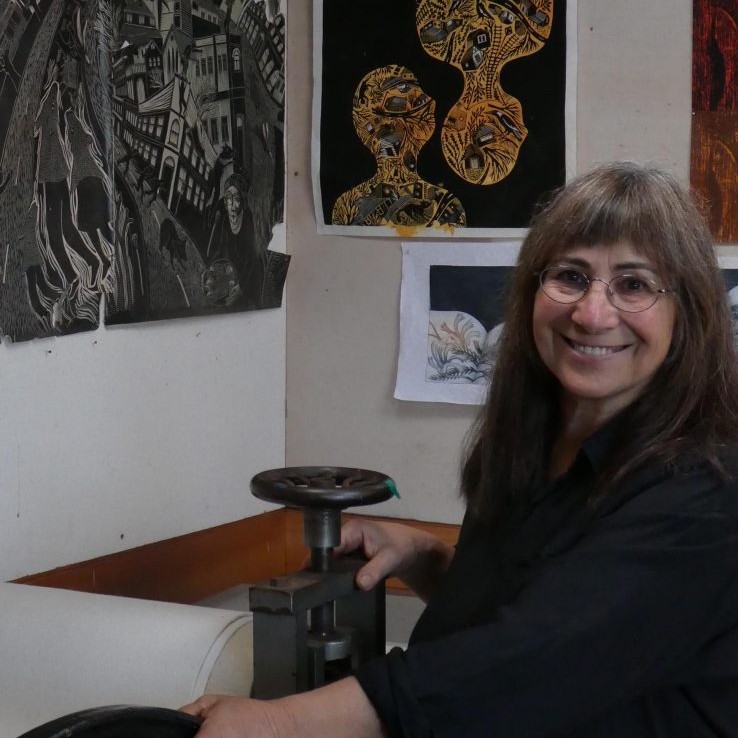Greg Winrow Printmaker
Take two architectural works and expand on them and what initially drew the sites to you?
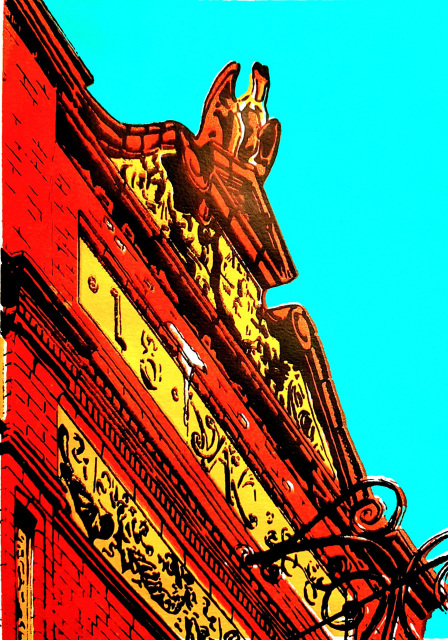
Fossgate Glory
With ‘Fossgate Glory’ I was drawn to the intricate stonework and of course the Majestic Eagle on top! What makes it more, surprising (or sad, in some ways I suppose) is this is higher in the building and rarely seen from the ground floor which now belongs to a pub chain.
‘Abstract Minster’ was again drawn by the fantastic Medieval Cathedral we have in York (more affectionatly, known as the Minster) It’s the biggest Cathedral in Europe and therefore it’s a difficult subject to avoid, Especially when it’s on your doorstep. I like the Winter effect of the tress within this image, the abstract feel of uncertainty, (if it’s there!) with the Minster in the background.
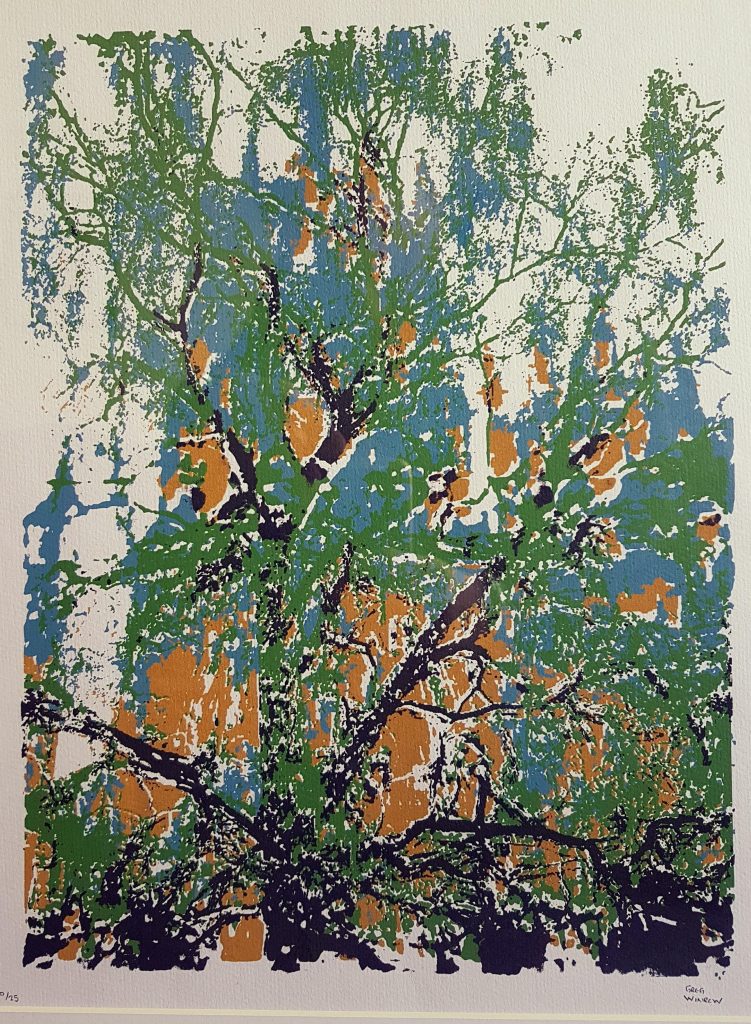
Abstract Minster
Discuss the importance of composition in your work?
This may sound a little pretentious, but I don’t, consciously, think upfront about the visual elements or ‘putting together’ of the image. I just look for something that has an interesting angle perhaps and a pleasing feel to it.
Take Janes Shoes and discuss.
Jane’s Shoes was inspired by a friend of mine, Jane, not surprisingly! who sent me an image of her patent leather shoes which blew me away.
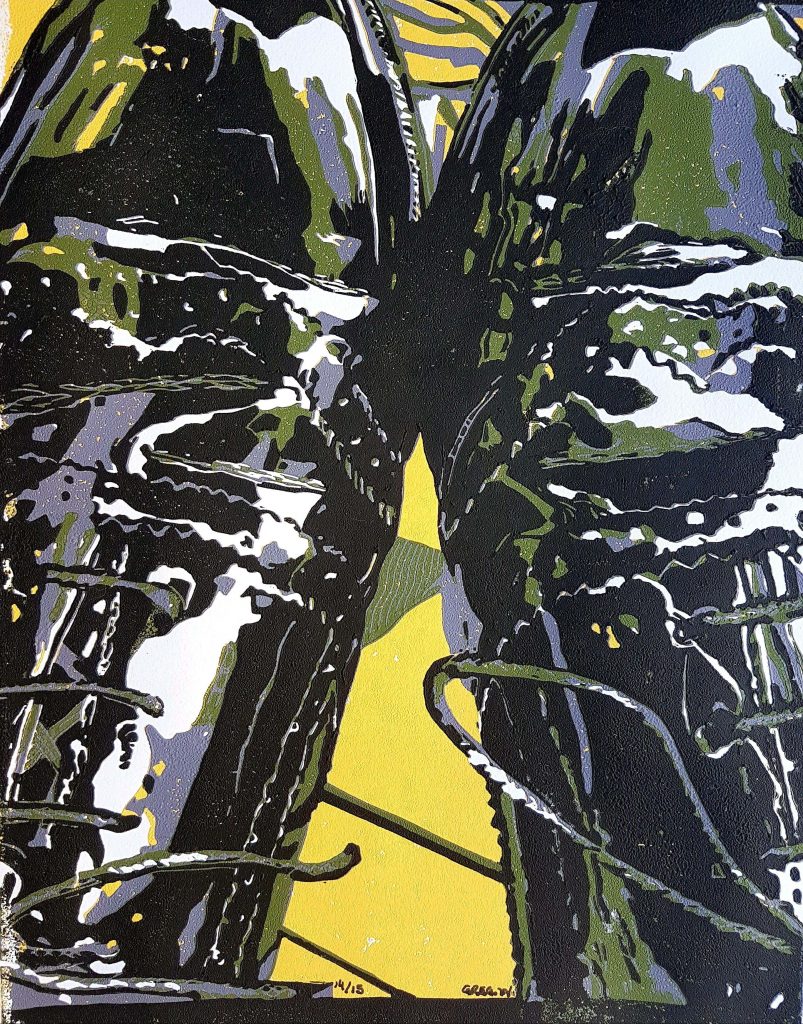
Janes Shoes
I loved the contrast between the lights and darks and thought it would be a great candidate for a lino.
Expand on the use of monochrome colour in ‘Shambles at Night’
The limited colour on ‘Shambles at Night’ was indeed a deliberate choice. I wanted the darks of the blue to emphasise the night and I suppose the chilling cold we get here in the winters. It was an experiment in the technique of reduction lino and the first one to use this process.
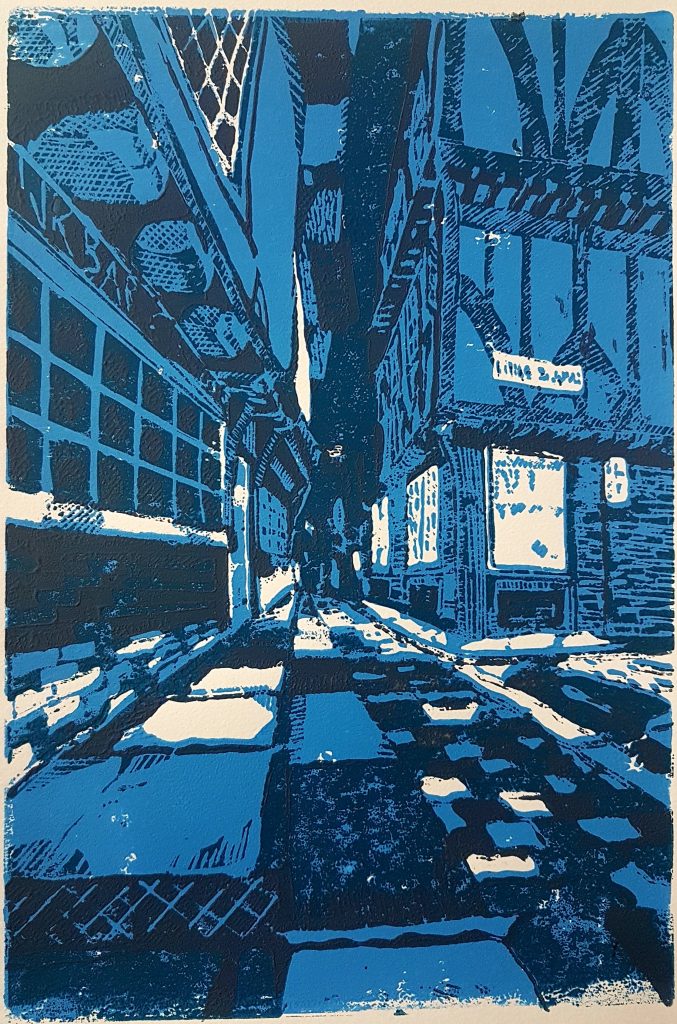
Shambles at Night
What is the limit number of your prints?
This can vary but usually between 10 and at the most around 40.
Do you sign all your limited prints?
Everyone!

You also work with silk screen print method discuss the differences of this technique to other methods you use.
Well, I only use Lino and Silk screen for the moment, but I am considering other processes. Lino can be an almost meditative process, I call it ‘Western Meditation’ sometimes! It’s a slow process but the interesting part, is deciding which elements of the Lino to remove. This is the fun part for me, then when the carving starts it can take hours, but it’s good to whittle away the time listening to some uplifting music in the background.
Silk screen on the other hand is a completely different affair! Once the image is prepared into stencils it can be a messy process, sort of old school photography I suppose and a bit nail biting in the worry that the image may over or under expose. If successful, the results can be more dramatic and instantaneous though.
When do you use Lino Printing?
I tend to split my time around 50/50 between both Lino and Silk Screen work, what motivates me between either isn’t really known to me and I just tend to go with where the tide sends me! As mentioned, Lino work can be a somewhat meditative form and I may choose this as a more relaxing (if that’s the correct use of the word)
process. Most of my lino work now uses the reduction process whereby the same block is used multiple times and each ink is layered on every decreasing block finishing the last layer on very little lino from which I started. Once finished it can’t be used again so the prints are unique. They can’t be reproduced anymore, so this has a kind of charm I think.
You have done many commissions.
Take one and give us the background to the commission.
‘Dunton Springs’(with the barn house in the rear) was a commission I did for an old friend from way when. Emma and her husband sometimes visit this holiday destination in Colorado, and I did this commission as a gift from Emma to her husband on their wedding anniversary whilst they were there. It had a colour scheme that Emma wanted to follow but otherwise the draft was left up to me.
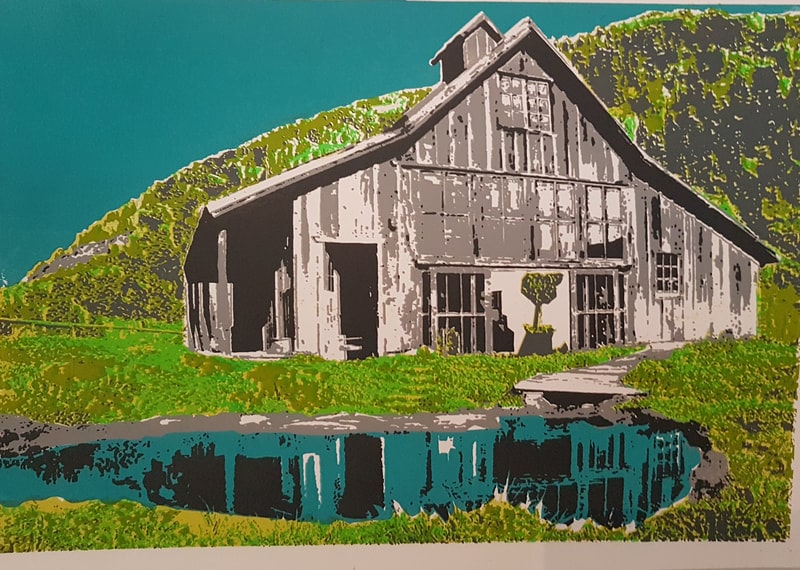
Dunton Springs
How has your location influenced your work both urban and rural York?
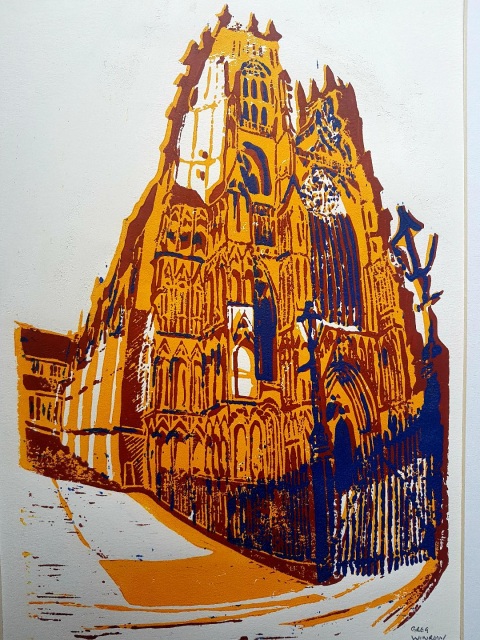
York Minster
Absolutely! York is a treasure trove of medieval streets and Roman influences, it’s also a small city so it’s easy to get around and one can’t help but feel influenced everywhere you turn.
Not travelling too far away you are suddenly out in the North Yorkshire countryside and this also is immensely picturesque. My work does tend to focus within the city however as I find the local architecture more enticing.
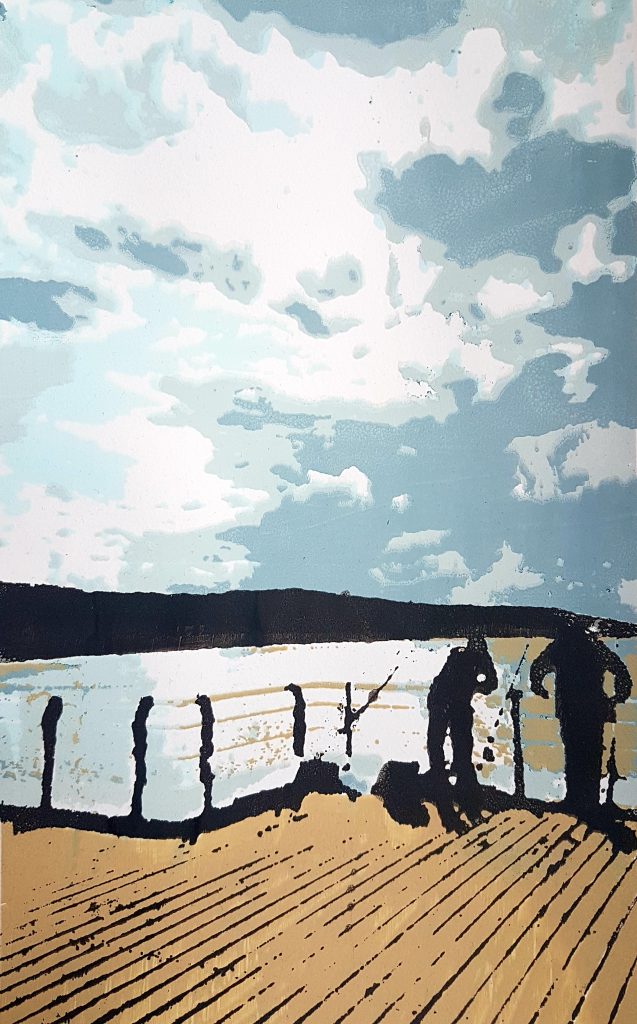
Saltburn Fisherman
How has your photography influenced your printmaking?
I studied Photography many years ago now, but I can’t deny it must have an influence on how I see things, even if subliminally.
You are a member of the York Printmakers, what are two of the benefits of this membership?

Initially when I got back into the swing of things, I was a touch reluctant with the public aspect of my work. The Printmakers is a very good group that help and promotes effectively. It’s a great opportunity to meet with like-minded individuals who share the same or similar format, but I think if I’m brutally honest the uplifting feeling from a sense of community within the group is my main draw.
Can you share your studio with us?
Certainly, my studio and my living quarter tend to merge. This can have great advantages (in not having too far to travel) but on the down side I do have to be disciplined to avoid some fatal distractions. Tea and biscuits, etc.

What is the main advantage of having your own press?
When I first started doing lino prints, I was using the back of a spoon which, crude as it was had some great results but a bit rustic in approach. Now that I have a press the results are a lot more refined and I love the process.
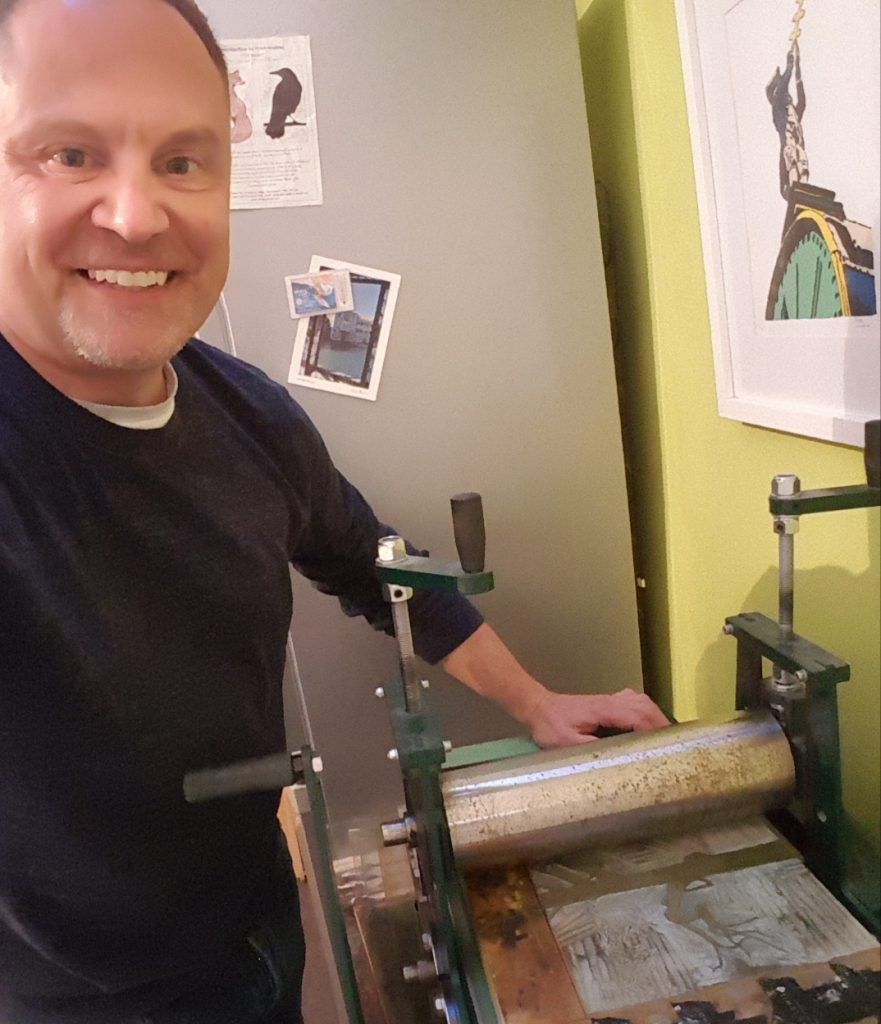
What is one of the disadvantages of this press ownership?
I opted for what’s called a ‘portable press’ It still weighs about 50kg and was difficult getting into the studio. Apart from this, there are none I can think of. Even my cat ‘Percy’ approves and often can be seen sitting on the press whilst I’m busy elsewhere.

Contact details:
Greg Winrow
gregwinrowprintart.com,
gwinrow@yahoo.com
Deborah Blakeley, Melbourne, Australia
Interview by Deborah Blakeley, November 2019
Think a colleague or friend could benefit from this interview?
Knowledge is one of the biggest assets in any business. So why not forward this on to your friends and colleagues so they too can start taking advantage of the insightful information the artist has given?
Other artists you may be interested in:

